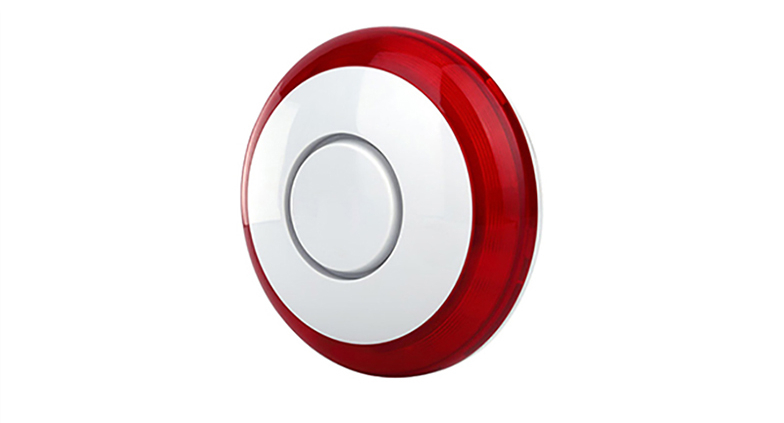Z-Wave Sensor: What They Are and How They Work
In this guide, we’ll break down everything you need to know about Z-Wave sensor in a simple, friendly way.
What Is a Z-Wave Sensor?
A Z-Wave sensor is a wireless device that communicates with other smart home gadgets using Z-Wave technology. These sensors can detect motion, temperature, humidity, door/window activity, water leaks, and much more. They send signals to a Z-Wave hub, which then triggers specific actions, such as turning on lights or sending alerts to your phone.
Unlike traditional Wi-Fi or Bluetooth devices, Z-Wave operates on a dedicated low-power frequency, making it more reliable and energy-efficient for home automation.
How Do Z-Wave Sensor Work?
Z-Wave sensors function as part of a Z-Wave mesh network. Here’s how it works:
- Detection: The sensor detects movement, temperature changes, or other environmental factors.
- Signal Transmission: It sends a signal to the Z-Wave hub or controller.
- Automation Trigger: The hub processes the signal and triggers an action, like turning on lights or adjusting the thermostat.
- Response & Notifications: You receive real-time alerts on your smartphone if needed.
Since Z-Wave devices communicate with each other, they strengthen the network, ensuring reliable and secure connectivity throughout your home.
Types of Z-Wave Sensor
There are many types of Z-Wave sensors available, each designed for a specific purpose. Here are some of the most popular ones:
1. Motion Sensors
These sensors detect movement and can trigger smart lights, security cameras, or alarms. They’re great for home security and energy savings.
2. Door & Window Sensors
Placed on doors and windows, these sensors alert you when they’re opened or closed. Perfect for security systems and automating lighting.
3. Temperature & Humidity Sensors
Monitor indoor climate and integrate with smart thermostats for better energy efficiency and comfort.
4. Water Leak Sensors
Detect leaks early and send alerts to prevent costly water damage. Ideal for basements, bathrooms, and kitchens.
5. Smoke & CO Sensors
These sensors enhance home safety by detecting smoke or carbon monoxide and triggering alarms or notifications.
6. Light & Lux Sensors
Measure ambient light levels and adjust smart lighting accordingly for energy savings and convenience.
Benefits of Using Z-Wave Sensors
Why should you choose Z-Wave sensors over other smart home solutions? Here are some key benefits:
Reliable & Long-Range Connectivity
Z-Wave operates on a low-frequency band, reducing interference and ensuring strong connections, even in large homes.
Energy-Efficient & Battery-Friendly
Most Z-Wave devices use very little power, meaning longer battery life compared to Wi-Fi-based alternatives.
Scalable & Expandable
You can start with a few sensors and gradually build a complete smart home system. Z-Wave devices work seamlessly with each other.
Enhanced Security
With built-in encryption, Z-Wave networks offer strong protection against hacking and unauthorized access.
Compatible with Many Smart Hubs
Z-Wave sensors work with popular hubs like SmartThings, Hubitat, and Home Assistant, making them highly versatile.
How to Set Up a Z-Wave Sensor
Setting up a Z-Wave sensor is easier than you might think. Here’s a simple step-by-step guide:
1. Choose a Z-Wave Hub
Make sure you have a compatible Z-Wave hub (like Samsung SmartThings or Aeotec Hub).
2. Put the Sensor in Pairing Mode
Most sensors have a pairing button. Press and hold it until the LED blinks.
3. Add the Sensor to Your Hub
Open your smart home app, go to device settings, and select “Add Z-Wave Device.” Follow the prompts to complete pairing.
4. Place the Sensor in the Right Location
For best performance, position the sensor where it can easily detect movement, temperature changes, or other targeted activity.
5. Test & Automate
Check if the sensor is working properly and set up automation rules, like turning on lights when motion is detected.
Z-Wave vs. Wi-Fi & Zigbee: Which Is Better?
If you’re wondering how Z-Wave compares to other smart home technologies, here’s a quick comparison:
| Feature | Z-Wave | Wi-Fi | Zigbee |
|---|---|---|---|
| Range | Up to 100m per device | Shorter range | 10-20m per device |
| Interference | Minimal (uses low frequency) | High (crowded 2.4GHz band) | Medium |
| Power Consumption | Low | High | Low |
| Security | High (encryption) | Medium | High |
| Device Compatibility | High | Medium | High |
Verdict: If you want a low-power, reliable, and secure smart home network, Z-Wave is a great choice, especially for larger homes.
Final Thoughts
Z-Wave sensor are an excellent way to upgrade your smart home, adding automation, security, and energy efficiency. Whether you’re looking to monitor motion, temperature, or water leaks, there’s a Z-Wave sensor for every need.
With easy setup, long-range connectivity, and strong security, Z-Wave remains one of the best wireless technologies for home automation. If you’re ready to take your smart home to the next level, start exploring Z-Wave sensor today!



